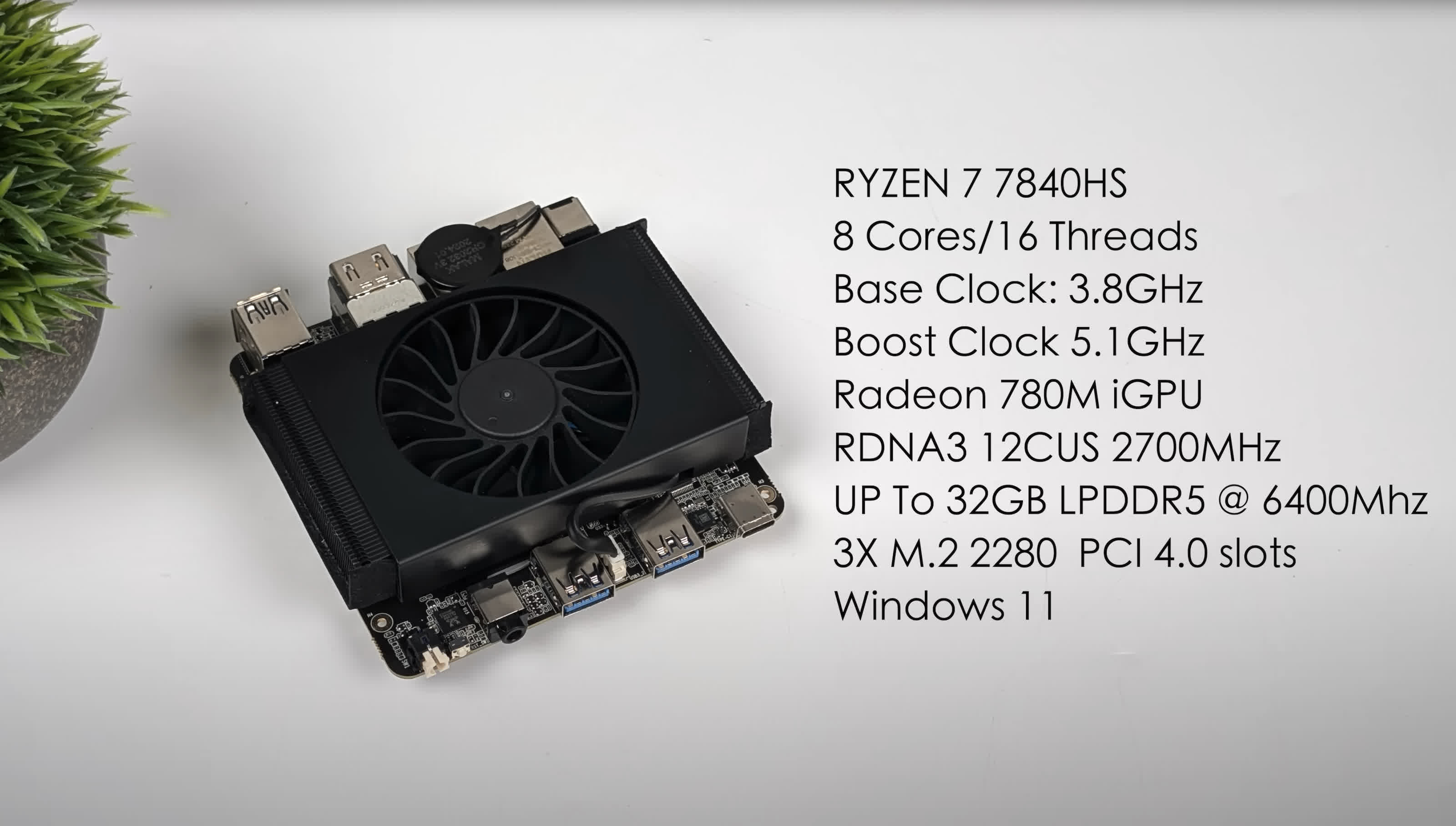Bottom line: Gaming enthusiasts with a penchant for compact tech might find their next obsession in the unannounced Next SBC. The compact device is small enough to fit your pocket, powerful enough to play PC games decently, and has plenty of connectivity options.
YouTuber ETA Prime got a review model even though the company has yet to post its Indiegogo page (review above). The Next SBC specifications are anything but modest. This tiny marvel sports a Ryzen 7 7840HS processor and a Radeon 780M integrated GPU. The Phoenix Point APU combines an RDNA 3 iGPU with LPDDR5 RAM, available in 16 GB and 32 GB variants.
While the RAM is soldered to the board, this design keeps the build compact and cost-effective. Despite its diminutive size, it boasts gaming performance that rivals some of today's full-sized gaming laptops. Its performance is impressive for its size, particularly in well-optimized games.

ETA Prime's testing showcased its capabilities across several popular titles. In Doom Eternal, the SBC delivered a smooth average of 79 fps at 1080p medium settings. Overwatch 2 managed to stay in the 80 – 100 fps range, while Spiderman Remastered and God of War performed admirably with the help of frame generation. These results highlight the potential of the Radeon 780M, which leverages modern upscaling techniques to deliver decent frame rates.
The board offers three M.2 slots for storage expansion, each supporting drives up to 4TB, outshining many larger systems. It also has plenty of connectivity options, including 3.5mm audio, four USB 3.2 ports, one USB 4, 12-19V power input (adapter sold separately), two 2.5G Ethernet, and two full-size HDMI ports.
However, the mini device comes with some trade-offs. First, the Phoenix Point APU is not the latest Strix Point chip, a decision the company likely made to keep costs low. Additionally, it sports a caseless design. This feature, or lack thereof, isn't a game breaker, but those who prefer a proper chassis for protection might have to invest in a custom 3D-printed case.
Although the Next SBC has yet to debut on Indiegogo, ETA Prime says the company is shooting for a base model price point of $329, offering an incredible value/performance ratio. For context, that's less than the cost of an RTX 4060 Ti GPU alone. Early adopters might snag an even better deal, but final pricing and availability remain uncertain – such is the way with crowdfunding campaigns.